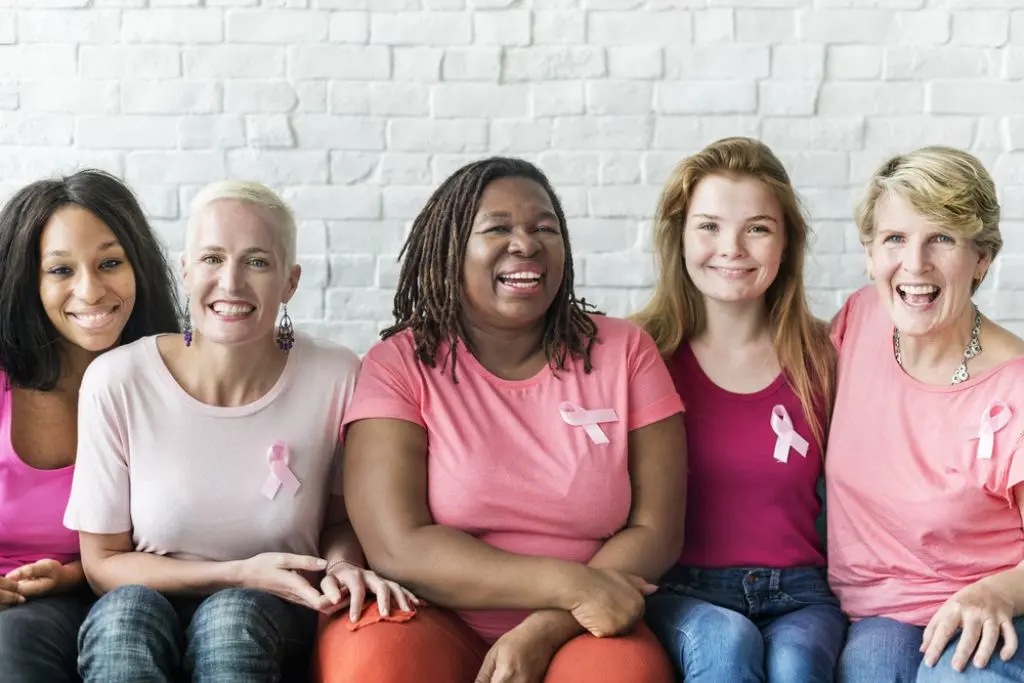Know Your Normal: How To Check For Breast Cancer
October is the perfect month to make a regular breast check part of your healthcare routine.

September 29, 2022 - Updated October 1, 2025

Here at Sweat, we often talk about how getting to know your unique body can help you discover which choices feel best for you when it comes to things like nutrition, hydration, movement and rest. One body part that is SO important to get to know is your breasts.
October is Breast Cancer Awareness Month, and if it’s not already part of your healthcare routine, now is the perfect time to learn about how to do a breast check and start making it a new monthly habit.
Why breast awareness is so important
According to the World Health Organisation, breast cancer is the world’s most prevalent cancer, and the National Breast Cancer Foundation in the United States says that one in eight women are diagnosed with breast cancer in their lifetime, with an average of two women diagnosed every minute. Men can also get breast cancer (although it’s not as common), as can trans women and non-binary people.
The survival rate for breast cancer is high when detected early, but sadly, many women still lose their lives to the disease each year. The National Breast Cancer Foundation estimates 43,550 women will die from breast cancer in 2022 in the United States alone, which is why better understanding our breast health is SO important.

Know your normal
For many women, breast cancer is detected through an x-ray of your breast tissue called a mammogram. Mammograms are recommended once every two years by the Australian Cancer Council for women aged 50-74 as this age group is more at risk, but this doesn’t mean younger women aren’t affected or that breast health and awareness shouldn’t be a priority well before you hit your fifties.
It’s so important to get to know what is normal for your breasts and check them regularly so that you’ll notice if anything changes and can get yourself checked by your healthcare provider as soon as possible. According to the McGrath Foundation, nearly 75% of Australian women think they are breast aware, while only 16% have the knowledge and skills to recognise changes in their breast health.
Even if you are getting routine mammogram screenings, you should still self-check your breasts, and self-examinations are also not a substitute for regular mammograms, which can detect cancer before a lump appears.
Self-examinations are even more important for people with a family history of breast cancer, inheritance of mutations in the genes BRCA2 and BRCA1 (which you can be tested for), or if you have been previously diagnosed with breast cancer.
For breast awareness and knowing what’s normal for you, the NHS Breast Screening Programme recommends self-checking, knowing what to look for, reporting any changes to your doctor immediately, and getting routine screenings if you’re aged 50-70.

How to do a breast check: Look and feel
So, how do you check your breasts? If you menstruate, it helps to check yourself the week after your period ends, as many women experience lumpiness, swelling or tenderness in their breasts before or during their period - and changes around your period are completely normal. Checking your breasts around the same time each month will also help to account for any regular hormonal changes.
There’s no right or wrong way to self-check, but the most important thing is to be thorough and use your eyes and your hands to get a good sense of what is normal for YOU, as breasts can differ from woman to woman in terms of size, shape, colour and texture. You might also find that each of your breasts are different, which is normal, too (unless it’s a new change, which you should get checked).
The National Breast Cancer Foundation recommends women of all ages perform breast self-examinations at least once a month, using the flat pads of your three middle fingers to check the entire breast, armpit and chest area up to your collarbones with a mixture of light, medium and firm pressure to feel the tissue at different depths. You’re feeling for any changes, such as lumps, thickening, knots or painful areas.
This can be easiest in the shower or bath when you can lather up with soap to allow your hands to glide, or when you are moisturising. You may also find it easier to do when lying on your back as your breast tissue spreads out. Find a routine that suits you and that you are comfortable with.
The NHS and Mayo Clinic both say that looking in the mirror for any visual changes is also important, with your arms by your sides, on your hips and then raised above your head. According to the American Cancer Society, you’re looking for any swelling, skin dimpling, inverted nipples (turning inwards), nipple discharge, redness, scales or rashes.
What if something has changed?
If you notice a change in your breasts, book in to see your healthcare professional as soon as possible, and they’ll be able to make an assessment and book you in for any additional tests you might need such as a mammogram.
Most breast changes and lumps are not cancerous, and you might notice different changes as you age, as your hormones change, or in different stages of your menstrual cycle. However, this doesn’t mean you should wait or ignore any changes!
Because cancer can advance rapidly, it’s always better to be on the safe side and get checked if you notice anything different, as your chance of survival and effective treatment is higher if your cancer is diagnosed and treated in its early stages.
When was the last time you checked your breasts? If you never have, now is the perfect time to make copping a feel part of your self-care routine. While you’re at it, text your best friend and tell her to check hers too!

A more empowered you starts with Sweat, and our editorial team is here to bring you the latest fitness tips, trainer recommendations, wellbeing news, nutritional advice, nourishing recipes and free workouts.
* Disclaimer: This blog post is not intended to replace the advice of a medical professional. The above information should not be used to diagnose, treat, or prevent any disease or medical condition. Please consult your doctor before making any changes to your diet, sleep methods, daily activity, or fitness routine. Sweat assumes no responsibility for any personal injury or damage sustained by any recommendations, opinions, or advice given in this article.
Wellbeing